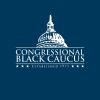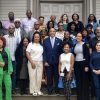The use of the phrase “white supremacy” is ubiquitous in American political discourse. This is a result of many factors. Primarily, the election of Barack Obama and the United States’ changing racial demographics have created a reactionary backlash from white conservatives.
White supremacy is referenced in relation to specific news events as well. For example, the murder rampage by the neo-Nazi Frazier Glenn Miller, the recent weeks-long debate between pundits Ta-Nehisi Coates and Jonathan Chait about “black pathology”; birtherism; stand-your-ground laws; and the open embrace of the symbols and rhetoric of the old slave-holding Confederacy by the Republican Party have been framed and discussed in terms of white supremacy.
Conservatives and progressive often use the phrase “white supremacy” in divergent ways. Conservatives use the phrase in the service of a dishonest “colorblind” agenda, evoking extreme images of KKK members and Nazis as the exclusive and only examples of white racism in American life and politics. Conservatives use extreme caricatures of white supremacy in order to deflect and protect themselves from charges that the contemporary Republican Party is a white identity organization fueled by white racial resentment.
Liberals, progressives and anti-racists use the phrase “white supremacy” to describe the overt and subtle racist practices of movement conservatism in the post-Civil Rights era, and how American society is still structured around maintaining and protecting white privilege.
This analysis is largely correct: however, it often conflates concepts such as racism, white privilege, and white supremacy with one another. Language does political work.
In the age of Obama, the phrase “white supremacy” is often used in political discussions like an imprecise shotgun blast or a blockbuster bomb. If the Common Good and American democracy are to be protected—countering how the right wing has used the politics of white racial resentment, racial manipulation, and hate to mobilize its voters in support of a plutocratic agenda—a more precise weapon is needed. A necessary first step in that direction requires the development of a more detailed and transparent exploration of the concept known as “white supremacy.”
What is white supremacy?
1. White supremacy is a complex social phenomenon. It is also a relatively new invention that was created to make Europe’s efforts to colonize and conquer the world seem like a “natural” process wherein “superior” white races would dominate “inferior” non-whites.
The Transatlantic slave trade was pivotal for the invention of race by creating a sense of group stigma and a belief in the concrete biological differences between white Europeans and Africans.
In the United States, a white supremacist racial order was birthed by a revolt in 17th-century Virginia, when black and white indentured servants allied together to fight for their freedom and rights. White elites defeated their rebellion and instituted a system of racial classification in which white indentured servants would be given land and guns after their service was complete while blacks would be made into a permanent class of slaves.
2. White supremacy is comprised of habits, actions and beliefs. It is not necessarily reliant on the specific intentions of its actors, practitioners or beneficiaries. Of course, there are “active” racists whose intentions, words, and deeds are meant to advance a racist agenda. However, implicit and subconscious bias, as well as taken for granted stereotypes and “common sense,” can also serve a white supremacist order. Ultimately, intent is secondary to the unequal outcomes across the colorline that individuals benefit from and perpetuate.
White supremacy also has the power to reorient and reimagine empirical reality for those who have consciously and/or subconsciously internalized and learned its principals and assumptions. White privilege is central here: those people considered “white” are also judged to be “normal”; the experiences of white people are taken to be universal and a baseline for how others are to be evaluated; African-Americans are judged en masse as having “bad culture” while whites are de facto viewed as having “good culture.”
White people are viewed as individuals where the bad behavior of one white person does not reflect at all on the merits of the group. By comparison, African Americans and other people of color are not afforded that freedom. Ultimately, for white supremacy one’s “Americanness” is naturally linked to one’s whiteness, while the loyalty, and sense of civic belonging assigned to people of color, is contingent until proven otherwise.
3. Images of terrorist organizations such as the Ku Klux Klan and neo-Nazis serve as outlier caricatures of racism in the post-Civil Rights era. These cartoon versions of white racism do the work of white supremacy as a social and political force because they present virulent white racism as an anachronism or the habit of somehow damaged and defective white people who should be ejected from the public square. In colorblind America, “polite” and “respectable” white supremacy is far more dangerous to the life chances and safety of people of color than the overt racism of the Ku Klux Klan or other racially chauvinistic organizations.
4. In the most basic sense, white supremacy is a philosophical, material, ethical, economic, scientific, religious, and political system that works to maintain the dominant and relative superior group position of those identified as “white” (and their allies) over those marked as “non-white.”
Thus, white supremacy is the philosophical and systemic umbrella for white racism.
5. Racism and prejudice are not the same things. Racism is prejudice plus power. Racism is also the ability of one group of people to systematically impact the life chances and freedom of others who are deemed to be the Other.
Although it is convenient and easy to believe that all groups in the United States are equally “racist,” such a claim is empirically unfounded. Moreover, such a fiction sustains white supremacy by ignoring the vast amounts of historical and contemporary evidence detailing how American society is politically, economically, and socially structured to the advantage of white people.
In the United States, white people are the dominant racial group. Of course, there are white individuals who commit active and intentionally racist acts. But, the most powerful manifestation of white supremacy as a type of group power is how individual white people in American society can still passively benefit from white racism and the psychological, material and political advantages it brings to their group.
This is one of the primary fruits of the white supremacist project.
7. White supremacy works on an institutional and inter-personal level. Its ultimate goal is securing more resources, power, opportunities, and privileges—material, psychological or otherwise—for the in-group over the out-group.
The racial logic and commonsense of white supremacy (and a white racist society) is sustained by not asking about first principles.
For example, what public policy decisions led to white Americans having at least 20 times the wealth of black Americans[3]? Why are urban black and brown communities economically disadvantaged, and white communities (i.e. the suburbs), have been materially advantaged by comparison? Whose interests are served by a criminal justice system that disproportionately and unfairly punishes people of color?
9. Colorblind racism is the most recent iteration in a white supremacist order where it is possible to have “racism without racists,” and a black American president, while social and institutional systems still privilege whites over African Americans and other people of color.
White racial innocence, and a sincere belief by many white folks that they do not hold racist attitudes, or benefit personally or collectively from systemic white racism, is an example of how white supremacy has evolved to make itself relatively invisible (to willfully ignorant white people) as a dominant social force in American life.
Consequently, one of the deep tensions and challenges surrounding racial discourse in post-Civil Rights America is how to locate a given white person’s relationship to a broader system of institutional racism.
10. Austerity, neoliberalism, globalization, and the culture of cruelty [4] are some of the most powerful social forces in post-Civil Rights America. White supremacy does not exist separate or apart from those ideologies and practices.
The destruction of the social safety net and the siphoning of resources from the middle and working classes to the very rich are legitimated through a language which focuses on punishing the “lazy” and “unproductive” poor, i.e. people of color, in the service of “efficiency” and “fairness.”
The gutting of the public sector, deindustrialization and the wholesale elimination of jobs which pay a living wage, has had a disproportionate impact on black and brown communities. In many ways, the onerous assault on the (white) American middle class by the forces of Austerity and “privatization” was tested and pioneered on inner-city, working-class, black and brown communities.
The militarization of police departments, the excessive use of police force against innocent people, and the surveillance society was first applied to black and brown communities in America’s central cities. These policies met with little complaint from white people who felt that they were being “protected” from “black crime.” Those forces are now being unleashed on the white middle-class to their surprise and shock.
White supremacy involves, both in the present and historically, the systematic transfer of wealth, income, and other resources from non-whites to whites as a general group, and a white elite, in particular. There are many examples of this phenomenon.
White Americans have at least 20 times the wealth of blacks and Latinos. The Homestead Act, the New Deal and the GI Bill, were all examples of wealth creation opportunities and an inter-generational transfer of resources within the white community that African Americans and other people of color were specifically denied access to. The extreme levels of wealth and income inequality in the United States is a story of how race and class work together to structure life outcomes.














